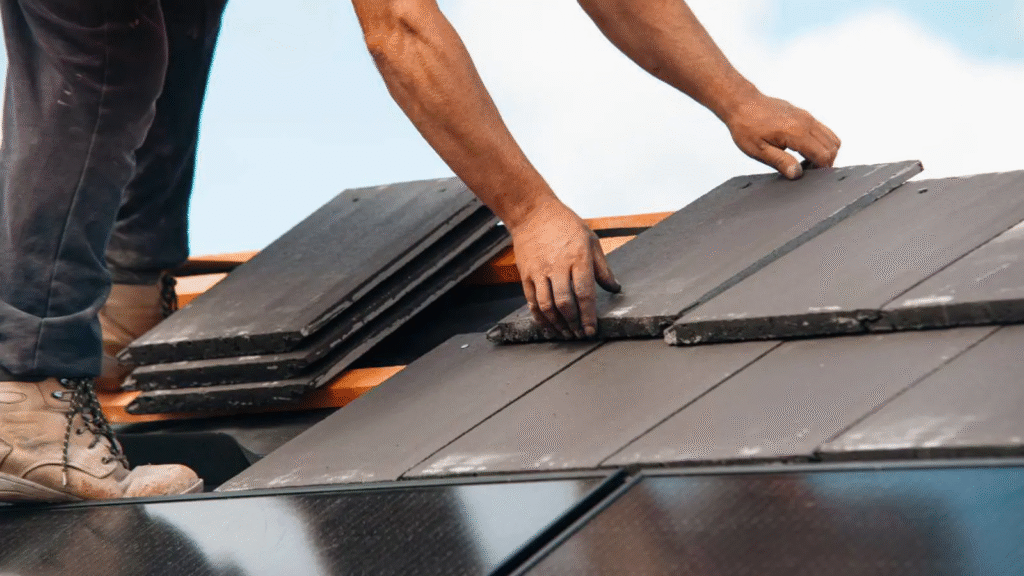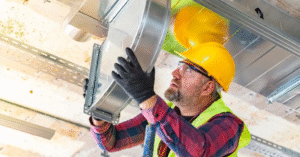Roof Repairs 101: Preventing Small Issues from Becoming Big Problems
If you’ve ever ignored a strange rattle in your car until the whole thing broke down, you’ll understand how roofs work. The difference is, when your roof fails, it’s not just your transport at risk, it’s your entire home.
Small roof issues have a nasty habit of turning into costly disasters if left alone. A cracked tile today can lead to a slow leak, which turns into ceiling stains, mould, and structural damage before you’ve even booked a tradie.
This manual will take you through the most typical roof issues, how to catch them early, and what you can do prior to things getting out of hand. We will also discuss the way various suburbs, coastal, inland, old, and new, introduce their own curveballs into the equation.

1. The Usual Suspects: Common Roof Problems in Aussie Homes
Cracked or Broken Tiles
They can be damaged by falling branches, foot traffic on the roof, or simply aging. Once water finds its way underneath, the damage is rapid. In old suburbs such as Maroubra, many houses have still got original terracotta tiles that appear excellent but chip readily after several decades of sunlight.
Rusty Flashings
Flashings are the thin strips of metal sealing the edges of your roof, chimneys, skylights, and vents. If they rust, water has a free ride in. It’s one of those little things homeowners tend to ignore until there’s an obvious leak.
Blocked Gutters
Leaves, dirt, and the occasional tennis ball can clog gutters, forcing water to pool and spill back under your roofline. A blocked gutter can cause more drama than you’d expect — water damage, rot, and even foundation problems.
Sagging Roof Lines
If your roofline is sagging, something’s amiss. It might be failing trusses or a lot of water damage. Either situation, it’s not merely a cosmetic concern — it’s a sign that your home’s structure is strained.
2. Why Little Problems Become Big, Expensive Problems
Consider a roof a chain. One weak link, a broken tile, rusty nail, or seal that’s gone, can jeopardize the entire system.
Once water gets in, it doesn’t let up. It seeps into wood, plaster, and insulation, spreading often a long distance from where it entered. By the time you notice a stain on the ceiling, the damage that has really occurred is much worse and much more costly to repair.
The answer? Take a car-service approach to roof maintenance, frequent tune-ups and small repairs prevent you from paying for costly repairs down the road.
3. Climate and Location: Why Your Suburb Matters
Sydney suburbs dish out varying fortunes for roofs.
Coastal Suburbs (Such As Maroubra)
Lives in the suburbs have their advantages — until you glance at your roof. Ocean air contains salt that accelerates metal corrosion, so Colorbond or steel roofs must be inspected more regularly. Even tiled roofs aren’t immune, with salty moisture corroding mortar through the years. For this reason, many roofers in Maroubra tend to suggest anti-corrosion coatings or treatments in particular.
Leafy Inland Suburb
Areas such as Wahroonga or St Ives experience fewer salt issues but increased gutter blockages due to tree debris. Bushfire-exposed areas also have more regulations regarding ember-resistant roofing materials.
Inner Suburbs Older
Balmain and Glebe are packed with heritage houses with original terracotta or slate tiles. Repairs in these areas can be problematic — matching the materials, accommodating older buildings, and adhering to heritage regulations all come into play.
4. Signs You Shouldn’t Ignore
Most roof problems give you a few warning signs before turning ugly. The trick is knowing what to look for:
- Ceiling stains or bubbling paint
- Mouldy smells in the attic
- Cracked or missing tiles
- Rust spots on metal roofing
- Overflowing or sagging gutters
- Daylight peeking through roof boards in the attic
If you spot any of these, it’s time to investigate — even if the damage looks minor.
5. DIY or Call the Pros?
There’s a lot you can do yourself, such as cleaning gutters, pruning overhanging branches, or inspecting loose tiles from the ground. But venturing onto a roof without training and safety equipment is dangerous.
DIY also has its limitations. Some jobs, such as sagging roofs or replacement of flashing, require experienced hands. A DIY repair job gone wrong usually ends up costing more to correct later.
A level head is the best way to go about it — do the easy, safe things yourself, and call in an expert for inspections and complicated repairs.
6. Preventative Maintenance Tips That Work
- Inspect twice a year: Spring and autumn are ideal times for a quick roof check.
- Clean gutters regularly: Don’t let debris sit and cause water overflow.
- Trim back branches: Prevent damage from falling limbs and reduce leaf litter.
- Check after storms: High winds and hail can cause sneaky damage you might not notice at first.
- Invest in quality repairs: Cutting corners now often means paying more later.
7. How Roof Issues Differ Across Sydney
Let’s compare a few examples:
- Maroubra: Salt corrosion and high winds from the coast are the main enemies.
- North Shore: Heavy leaf fall and blocked gutters dominate the problem list.
- Western Suburbs: Extreme summer heat can crack tiles and warp metal faster.
- Blue Mountains: Heavy rain and moss growth on tiles are common headaches.
Each area has its own “roof personality”, and maintenance strategies should reflect that.
8. A Real-Life Example: The Cost of Waiting Too Long
I used to have a friend who overlooked a single broken tile for almost a year. “It’s just one tile,” he said. Next winter, water had decayed some of the timber framework, mould had penetrated the insulation, and the ceiling needed to be replaced.
The initial repair cost would have been less than $300. The ultimate price tag? Barely less than $9,000.
9. Final Thoughts
Your roof is the shield that protects your home. Small issues don’t fix themselves — they quietly get worse until they demand attention in the most inconvenient (and expensive) way possible.
Whether you’re in a coastal spot like Maroubra or tucked inland, the principles are the same: keep an eye on your roof, deal with issues quickly, and don’t be afraid to call in expert help when needed.
A bit of vigilance now can save you a lot of money and hassle later. Or as one of the old roofer’s I spoke to said, “It’s the leaks you don’t see that sink you.”









